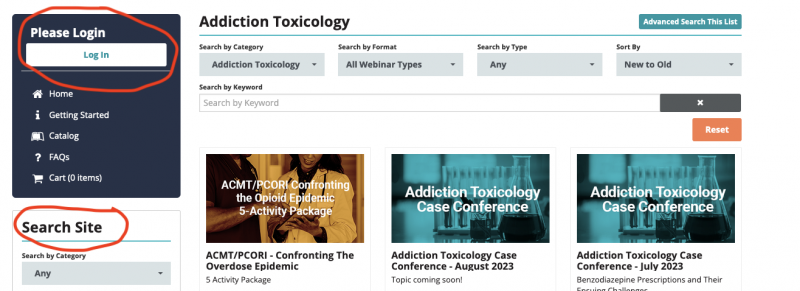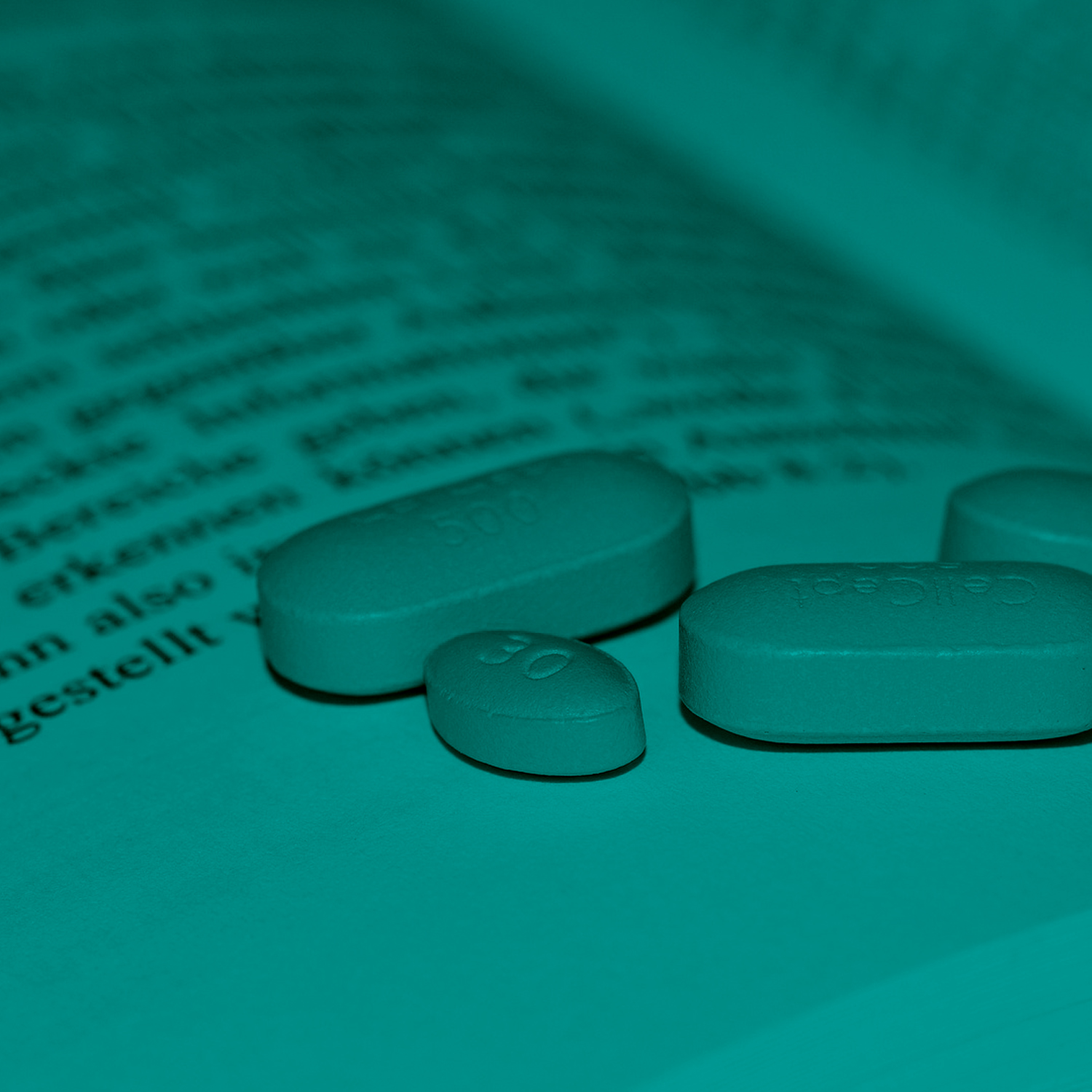
Addiction Toxicology Resources
This page has been created by the ACMT Addiction Toxicology Committee and contains pertinent resources with this focus. If you are an ACMT Member interested in joining this Committee please fill out this request form.
Quick Links

Journal of Medical Toxicology Articles
Please note: Members will need to log in to the Member Center to access all articles for free.
2024
Delta-8 Tetrahydrocannabinol Exposures Reported to US Poison Centers: Variations Among US States and Regions and Associations with Public Policy
Authors: Gary A. Smith, Alice Burgess, Jaahnavi Badeti, Natalie I. Rine, Christopher E. Gaw, Leah K. Middelberg, Henry A. Spiller & Hannah L. Hays
This study investigated exposures involving ∆8-tetrahydrocannabinol (∆8-THC) reported to US poison centers (PCs), including variation among states and regions. It evaluated whether the ∆8-THC exposure rate was lower among states with ∆8-THC regulations and states where cannabis (∆9-THC) use was legal.
Neurologic Deficits Following Oral Misuse of the Nasal Decongestant Propylhexedrine
Authors: Keahi M. Horowitz, Emma Cassidy & Courtney Temple
Propylhexedrine is an over-the-counter nasal decongestant used recreationally for amphetamine-like effects. Prior reports have associated intravenous misuse with brainstem dysfunction and diplopia. This is a case of propylhexedrine ingestion resulting in neurological impairment with associated MRI findings.
An Internet Snapshot Survey Assessing the sale of Synthetic Cannabinoid Receptor Agonists for use with Electronic Vaping Devices
Authors: Allon Gould, Paul I Dargan & David M Wood
Synthetic cannabinoid receptor agonists (SCRAs) are associated with significant toxicity and are increasingly used in electronic vaping devices. We assessed the availability of SCRA vaping products to UK purchasers on the surface web.
Neonatal and Maternal Ichthyosiform Dermopathy in Association with Kava Use during Pregnancy
Authors: Hannah H. Spungen, Kartik Mody, Becky Micetic, Christine Wade & A. Min Kang
Kava, a substance derived from the Piper methysticum plant, is enjoying a surge in popularity in the United States due to its purported anxiolytic and analgesic effects. Though ichthyosiform dermopathy is a known adverse effect associated with chronic kava exposure in adults, dermopathy in a newborn due to maternal kava use has not yet been described.
2023
ACMT & AACT Joint Statement on Nalmefene Should Not Replace Naloxone as the Primary Opioid Antidote at This Time.
Correction to Above
Authors: Andrew I. Stolbach, Maryann Mazer-Amirshahi, Lewis S. Nelson & Jon B. Cole
ACMT Position Statement: Role of the Medical Toxicologist in the Management of Patients with Substance Use Disorder
ACMT supports the role of medical toxicologists in the initial and long-term care of patients with substance use disorders and affirms that they play an essential role in addressing this public health crisis.
Authors: Andrew I. Stolbach, Maryann Mazer-Amirshahi, John Cienki, Leslie R. Dye, Lewis S. Nelson, Ryan Marino, Stephanie T. Weiss, Brandon J. Warrick & Paul M. Wax
2023 ACMT Annual Scientific Meeting Abstracts – San Diego, CA
Correction to: The Potential Proconvulsant Effects of Cannabis: a Scoping Review
Authors: Eric E. Kaczor, Kevin Greene, Jennifer Zacharia.
Delta-8-Tetrahydrocannabinol Exposure and Confirmation in Four Pediatric Patients
Delta-8-tetrahydrocannabinol (THC) is a known isomer of delta-9-THC, both found naturally in the Cannabis sativa plant and thought to have similar potency.
Authors: Kerollos Shaker, Andrea Nillas, Ross Ellison.
Characterization of Nonfatal Opioid, Cocaine, Methamphetamine, and Polydrug Exposure and Clinical Presentations Reported to the Toxicology Investigators Consortium Core Registry, January 2010–December 2021
To characterize and compare opioid-only, cocaine-only, methamphetamine-only, opioid-and-cocaine exposure, and opioid-and-methamphetamine exposure and to examine clinical … Authors: Emily Glidden, Kyle Suen, Desiree Mustaquim.
2022
Currently, few hospitals provide medications for opioid use disorder (MOUD) to admitted patients with opioid use disorder (OUD). Authors: Skyler H. Kessler, Evan S. Schwarz, David B. Liss
Phenobarbital has been successfully used in the emergency department (ED) to manage symptoms of alcohol withdrawal, but few studies have reported outcomes for ED patients who receive phenobarbital and … Authors: Jacob A. Lebin, Anita Mudan, Charles E. Murphy IV
The Potential Proconvulsant Effects of Cannabis: a Scoping Review
A total of 3104 unique articles were screened, of which 68 underwent full-text review, and 13 met inclusion/exclusion criteria. Ten of 11 studies evaluating acute cannabis exposures reported a higher seizure inci… Authors: Eric E. Kaczor, Kevin Greene, Jennifer Zacharia
Despite the evidence in support of the use of buprenorphine in the treatment of OUD and increasing ability of emergency medicine (EM) clinicians to prescribe it, emergency department (ED)-initiated buprenorphine… Authors: Utsha G. Khatri, Kathleen Lee, Theodore Lin.
Phenobarbital is frequently used to manage severe alcohol withdrawal. The purpose of this study was to compare the incidence of mechanical ventilation in patients with benzodiazepine-resistant alcohol withdraw… Authors: Poorvi Shah, Kati L. Stegner-Smith, Mohamad Rachid.
Currently, few hospitals provide medications for opioid use disorder (MOUD) to admitted patients with opioid use disorder (OUD). Data are needed to inform… Authors: Skyler H. Kessler, Evan S. Schwarz, David B. Liss.
Lebin, J.A., Mudan, A., Murphy, C.E. et al. Return Encounters in Emergency Department Patients Treated with Phenobarbital Versus Benzodiazepines for Alcohol Withdrawal. J. Med. Toxicol.18, 4–10 (2022). https://doi.org/10.1007/s13181-021-00863-2
2021
Prescription drug monitoring programs (PDMPs) exist in 49 states to guide opioid prescribing. In 40 states, clinicians must check the PDMP prior to prescribing an opioid. Authors: C. James Watson, Michael Ganetsky, Ryan C. Burke.
Buprenorphine is a unique μ-opioid receptor partial agonist with avid receptor binding, nominal euphoric reward, and a ceiling effect on sedation and respiratory depression. Authors: Rachel S. Wightman, Jeanmarie Perrone, Rachel Scagos.
During the current global COVID-19 pandemic and opioid epidemic, wastewater-based epidemiology (WBE) has emerged as a powerful tool for monitoring public health trends by analysis of biomarkers including drugs. Authors: Timothy B. Erickson, Noriko Endo, Claire Duvallet.
Opioid Use and Driving Performance
The USA is in an opioid epidemic, with an increased number of individuals taking psychoactive drugs while executing the tasks of everyday life, including operating a motor vehicle. Authors: Keaton T. Cameron-Burr, Albert Conicella, Mark J. Neavyn.
Methamphetamine toxicity is common in the Southwest region of the United States and presents diagnostic and treatment challenges in the pediatric population. Authors: Hannah R. Malashock, Claudia Yeung, Alexa R. Roberts.
Implementing a hospital medication for addiction treatment (MAT) and a linkage program. Authors: Gillian A. Beauchamp, Lexis T. Laubach.
Medical toxicology expertise has expanded into the addiction medicine realm including outpatient medication for opioid use disorder (MOUD) and addiction treatment. Authors: Shawn M. Varney, Timothy J. Wiegand, Paul M. Wax.
In response to the opioid epidemic, California state officials sought to fund a variety of projects aimed at reducing opioid-related deaths. We describe the California Poison Control System’s (CPCS) successful. Authors: Kathy T. LeSaint, Raymond Y. Ho, Stuart E. Heard.
2020
One hundred and thirty-one out of 382 eligible individuals from at least 76 institutions responded to the survey. A majority (60%) had a DATA 2000 X-waiver, 21% were board-certified in addiction medicine (AM), an… Authors: Joseph E. Carpenter, Brian Patrick Murray.
Mozeika, A.M., Ruck, B.E., Nelson, L.S. et al. Opioid-Associated Hearing Loss: A 20-Year Review from the New Jersey Poison Center. J. Med. Toxicol. 16, 416–422 (2020). https://doi.org/10.1007/s13181-020-00785-5
Naloxone Dosing After Opioid Overdose in the Era of Illicitly Manufactured Fentanyl
Illicitly manufactured fentanyl (IMF) is responsible for a growing number of deaths. Some case series have suggested that IMF overdoses require significantly higher naloxone doses than heroin overdoses. Authors: Joseph Carpenter, Brian Patrick Murray, Sukhshant Atti.
The height of the opioid epidemic in the USA has led to an increasing call for access to medication assisted treatment for opioid use disorder, including buprenorphine initiation from the emergency department … Authors: Megan Chenworth, Jeanmarie Perrone, Jennifer S. Love.
Wastewater-based epidemiology with smart sewer selection and robotic wastewater collection is feasible to detect the presence of specific opioids, naloxone, methadone, and buprenorphine within a city. Authors: Norkio Endo, Newsha Ghaeli, Claire Duvallet, Katelyn Foppe.
Emergency department (ED)–based naloxone distribution programs are a widespread harm reduction strategy. However, data describing the community penetrance of naloxone distributed from these programs are lacking… Authors: Jeffrey T. Lai, Brittany P. Chapman, Stephanie P. Carreiro.
Assessment of the Utility of the Oral Fluid and Plasma Proteomes for Hydrocodone Exposure
Non-medical use and abuse of prescription opioids is a growing problem in both the civilian and military communities, with minimal technologies for detecting hydrocodone use. This study explored the proteomic … Authors: Brooke L. Deatherage Kaiser, Jon M. Jacobs.
3-Hydroxyphencyclidine (3-HO-PCP) is a new psychoactive substance (NPS) and a hydroxy derivative of phencyclidine (PCP), and N-ethylhexedrone (Hexen) is a synthetic cathinone. Authors: Lisa Christine Dunlop, David Wood, John Archer.
Kratom is derived from the plant Mitragyna speciosa…which is indigenous to Southeast Asia. Active compounds, mitragynine and 7-hydroxymitragynine, cause mild stimulant and opioid agonist effects. Authors: Nicholas Nacca, Rachel F. Schult, Lingyun Li.
Electronic cigarettes (e-cigarettes) are battery-operated devices to insufflate nicotine or other psychoactive e-liquid aerosols. Despite initial claims of e-cigarettes as a nicotine-cessation device, aggressive Authors: Dazhe James Cao, Kim Aldy, Stephanie Hsu, Molly McGetrick.
Search the ACMT Learning Center for the Latest Addiction Toxicology Content
Access all of ACMT’s Addiction Toxicology related digital content including webinars, podcasts, and courses on the ACMT Learning Center. Once there, log in to your account or create a FREE one. Then either manually search the site and select Addition Toxicology as your category or click on “Addiction Toxicology” under Search By Topic.


ACMT Webinars
* Denotes webinars accessible only to ACMT Members

Addiction Toxicology Case Conference
The ACMT/ASAM Addiction Toxicology Case Conference is a monthly webinar series that discusses Addiction/Toxicology cases in an interactive fashion featuring experts from Addiction Medicine, Addiction Psychiatry, and Medical Toxicology. This activity is free and open to the public.

National Case Conference *

National Journal Club *
2024
This month’s topic is Clinical Cannabis Considerations in Children. The articles will be reviewed by the Harvard Medical Toxicology Fellowship Program, led by Dr. Michele Burns.
This month’s topic is Dexmedtomidine in alcohol withdrawal. The articles will be reviewed by the Northwell Health Medical Toxicology Fellowship at North Shore University Hospital & Long Island Jewish Medical Center (NS/LIJ).
This month’s topic is Xylazine. The articles will be reviewed by the Virginia Commonwealth University (VCU) Program in Medical Toxicology, led by Dr. Emily Kershner.
This month’s topic is The Use of GLP-1 Agonists for Substance Use Disorders. The articles will be reviewed by the Rutgers Health/New Jersey Medical School.
2023
March 2023
This month’s topic is Body Stuffers and Naltrexone. The articles will be reviewed by the UCSF Medical Toxicology Fellowship Program, led by Dr. Zhanna Livshits.
2022
July 2021
This month’s topic is Pepper Spray and Tear Gas Agents. The articles will be reviewed by the University of Virginia Program in Medical Toxicology, led by Program Director Heather Borek.
March 2022
This month’s topic is Opioid Overdose and Naltrexone. The articles will be reviewed by the Washington University School of Medicine Program in Medical Toxicology, led by Dr. Evan Schwarz.
2021
May 2021
This month’s topic is Withdrawal and Recent Modalities. The articles will be reviewed by the Rutgers Medical Toxicology Program, led by Dr. Jeena Jaco.

National Grand Rounds *
2024
April 2024
Psych Evaluation of Transplant Patients
August 2024
Methamphetamines
The National Institute on Drug Abuse (NIDA): Research and Communications
2022
October 2022
Cannabis Regulation
February 2022
Gone to Pot? The Complex Relationship between Cannabis, Cannabinoids, and Psychosis
2021
October 2021
NPS Discovery – a five-phase approach to NPS identification, characterization, education, and harm reduction

Practice, Position, and Joint Statements; Public Policy Letters

Practice Statements
2021
Sept. Interpretation of Urine Opiate and Opioid Tests. Read statement.
2020
May. Limiting Harms of Vaping and E-cigarette Use. Read statement.
2019
Nov. Interpretation of Urine for Tetrahydrocannabinol Metabolites. Read statement.
Sept. Buprenorphine Administration in the Emergency Department. Read statement.
Apr. Addressing Pediatric Cannabis Exposure. Read statement.
2016
Feb. Safety Issues Regarding Prescription Fentanyl Products. Read statement.

Position Statements
2024
Nov. CMT Statement on Fentanyl “Exposure” Laws. Read Statement.
2023
Nov.: Endorsed Guidelines. ASAM/AAAP Clinical Practice Guideline on the Management of Stimulant Use Disorder. Read guideline
Sept. Expanding Treatment for Youth with Substance Use-related Illnesses. Read Statement.
June Role of Medical Toxicologist in the Management of Patients with Substance Use Disorder. Read Statement.
2021
Sept. Allow Optimal Treatment for Healthcare Professionals With Opioid Use Disorder. Read statement.
2020
Sept. Ketamine Sedation and Law Enforcement. Read statement.

Joint Statements
2023
- Sept. ACMT & AACT Joint Statement on Nalmefene Should Not Replace Naloxone as the Primary Opioid Antidote at This Time. Read statement.
- Feb. ACMT, ACEP, NAEMSP Joint Statement on Naloxone Access and Utilization for Suspected Opioid Overdoses. Read statement.
2017
Nov. ACMT and AACT Position Statement on Preventing Occupational Fentanyl and Fentanyl Analog Exposure to Emergency Responders. Read statement.

Public Policy Letters
2022
Oct 13, 2022. CSOO Requests DEA and SAMHSA Grant Continued Telehealth Flexibilities for Buprenorphine for OUD Declared in Response to the Opioid PHE. Read letter.
May 13, 2022. The Mainstreaming Addiction Treatment Act. Read letter.
Apr 12, 2022. CSOO Members on FY23 Appropriations Letter Aimed at Strengthening the Addiction Service Workforce. Read letter.
Mar 31, 2022. CSOO Members Support Legislation to Screen, Assess, and Treat Maternal Mental Health Conditions and SUDs. Read letter.
Feb 14, 2022. CSOO Members Advocate the Federal Parity Act be Fully Extended to Medicare, Medicaid, and TRICARE. Read letter.
2021
Jul 26, 2021. CSOO Urges Biden Administration to Fly Flags at Half-Staff on Overdose Awareness Day. Read letter.
May 27, 2021. Introduction of the Support, Treatment, and Overdose Prevention of (S.T.O.P) Fentanyl Act of 2021. Read letter.
May 3, 2021. Excellence in Recovery Housing Act. Read letter.
April 6, 2021. CSOO Urges Congress to Include Funding for Programs to Strengthen the Addiction Service Workforce in Fiscal Year 2022. Read letter.
2020
May 5, 2020. CSOO Urges Congress to Include Key Initiatives to Support the Mental Health and SUD Treatment Infrastructure in Next COVID-19 Package. Read letter.

ACMT Visual Pearls
The Kitchen Cabinet High
Apr 24, 2024 | ACMT Visual Pearls, Expert Peer Reviewed (Clinical), Tox & Medications
By: Steven M. Perry, MD and Christine Murphy, MD
From Needle to Necrosis
Nov 29, 2023 | ACMT Visual Pearls, Expert Peer Reviewed (Clinical), Tox & Medications
By: Christiana Agbonghae, MD and Ann-Jeannette Geib, MD
I’ll Huff and I’ll Puff…
Jun 22, 2020 | ACMT Visual Pearls, Tox & Medications
By: Kathryn T. Kopec, DO and Blake Bauer, MD
“I have a nagging feeling about this”
Oct 5, 2020 | ACMT Visual Pearls, Emergency Medicine, Tox & Medications
By: Brian Lewis, MD, Gilbert Nelson, DO, Thomas Vu, DO and Bryan Judge, MD, FACMT
Case of a Toxic Tea
Nov 9, 2020 | ACMT Visual Pearls, Emergency Medicine, Tox & MedicationsBy: Nicholas Titelbaum, MD, Vir Singh, MD and Daniel Nogee, MD

ACMT Highlights Tox-in-Ten
